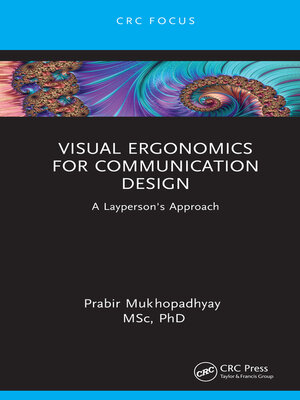
Sign up to save your library
With an OverDrive account, you can save your favorite libraries for at-a-glance information about availability. Find out more about OverDrive accounts.
Find this title in Libby, the library reading app by OverDrive.



Search for a digital library with this title
Title found at these libraries:
| Library Name | Distance |
|---|---|
| Loading... |
Visual Ergonomics for Communication Design reveals the application of ergonomics principles in visual communication design. It enables the visual designer to look at different aspects of visual design from the point of view of the user to ensure that their designs are more user-friendly.
The book allows the reader to apply the principles of ergonomics in different facets of communication design such as pictograms, icons and logo design, product labeling, information system in space, and visual ergonomics in simple map design. An introductory chapter allows the reader to learn the basics and principles of visual ergonomics and gives them an insight into the probable application areas. Further chapters delve deeper into the topic with each chapter ending with "Key Points", Practice Sections", and exercises designed to help the reader to revise what they have learned. The reader will benefit from coverage of visual ergonomics in icons, pictograms, and symbols, product labeling, wayfinding in space, and map design which are all backed up with examples and illustrations. Written with the layperson in mind who has no background in the subject, this interesting and easy-to-read reference addresses how to use the different principles of ergonomics in visual communication in a storytelling format.
With a narrative structure to the chapters and illustrated throughout, this book is an ideal read for students and professionals looking to strengthen their knowledge of visual communication design by augmenting it with ergonomic principles. It will appeal to students and professionals studying and working in the fields of computer science, human-computer interaction, design engineering, mechanical engineering, information technology, communications engineering, and human factors engineering.







